On the day after his 48th birthday, Aldo Leopold took a drive that would not only change his life, but would change the course of conservation, the way people write about nature and the outdoors, and the way we think about the environment and our place in it. He’d recently been named the country’s first Professor of Game Management by the University of Wisconsin, and with his career on secure footing he and his wife, Estella, had decided to act on a long-held dream: finding a place not far from Madison that could serve as a weekend retreat for themselves and their five children, the youngest of whom was eight, the oldest 22.
To help in this search, Leopold had recruited a friend named Ed Ochsner—and he couldn’t have picked a better-qualified person for the job. A renowned taxidermist (he frequently mounted specimens for the Ringling Bros. Circus) and legendary outdoorsman, Ochsner, then in his mid-60s, had spent his entire life rambling the hills and hollows of the Wisconsin River country.
While Leopold’s exact instructions are lost to history, Ochsner clearly had a good handle on the kind of property “The Professor” had in mind. And so, on January 12, 1935, Ochsner led Leopold to a scruffy abandoned farm along the Wisconsin River in southern Sauk County. The farmhouse itself had burned down; the only structure still standing was a chicken coop, roughly 20’ by 20’ and knee-deep in poultry manure.
Most people would have described the place as bleak, barren, even desolate—and doubly so in January. As far as Leopold was concerned, though, it was perfect. The price was right, too: $8 an acre. Soon he was the owner of 80 worn-out acres of sandy Wisconsin River bottomland (he’d acquire another 40 later), with the chicken coop thrown in at no extra charge.
It took a couple years, but with everybody chipping in the Leopolds gradually transformed the chicken coop into a habitable shelter. They built a fireplace, re-shingled the roof, installed a door, windows, and a few simple furnishings. They began spending virtually every weekend there, making the 45-minute drive from Madison on Friday afternoon after Leopold had wrapped things up at the University.
And they began calling it “the shack.”
These days, reflecting its shrine-like status, it’s usually capitalized in print as “the Shack” or “the Leopold Shack.” Perhaps the only site that rivals it, in terms of its significance to the American environmental movement and its resonance among lovers of wild things and places, is Thoreau’s Walden Pond.
For it was Leopold’s time at the Shack—planting seedlings, cutting firewood, hunting deer and grouse; noting in his journal the arrivals of the migratory birds and the blossoming of the flowers, the budding of the leaves and the turning of the seasons; watching the land rebound from the insults of the past to be restored to health under his family’s stewardhip—that inspired the essays that comprise his immortal A Sand County Almanac.
To Leopold fans like myself (my dog-eared paperback copy of the Almanac cost 95¢ when I bought it circa 1974), the titles of many of these essays are as familiar as the names of old friends: “Goose Music.” “Smoky Gold.” “Marshland Elegy.” “Good Oak.” “Great Possessions.” “Sky Dance.”
And, of course, “The Land Ethic,” which synthesizes Leopold’s philosophy and proposes that nature and natural resources cannot be viewed only through the lens of potential economic gain. If we don’t weigh the moral, spiritual, and aesthetic implications of our decisions vis-à-vis the land, argues Leopold, we ultimately deny our own humanity.
Again, Leopold’s time at the Shack helped crystallize this insight. As he wrote in the Foreword to A Sand County Almanac, which he completed only weeks before succumbing to a heart attack while fighting a grass fire on a neighbor’s property in April, 1948, “On this sand farm in Wisconsin, first worn out and then abandoned by our bigger-and-better society, we try to rebuild, with shovel and axe, what we are losing elsewhere. It is here that we seek—and still find—our meat from God.”
I’m a little ashamed to admit it, but despite my almost worshipful admiration for Leopold I’d never gotten around to visiting the Shack. I know: That’s about like calling yourself a Civil War buff without having ever visited Gettysburg.
Thankfully, my old friend Howard Mead took it upon himself to see that this gaping hole in my resumé was filled. One day last summer, Howard arranged for Buddy Huffaker, the Executive Director of the Aldo Leopold Foundation—which owns and manages the property and whose handsome stone-and-timber offices are just up the road—to give us a tour.
The first thing that struck me is how different the area looks, in general, from the largely open, almost Dust Bowl-like landscape depicted in the photos I’d seen from the 1930s and ’40. Now it’s heavily wooded, mostly in skyscraping white pines with an occasional bur oak mixed in.
“Almost all these trees were planted by the Leopolds,” Buddy explained. “That was one of their main activities here, even after Aldo died. They were always planting trees.”

I was struck, too, once Buddy had unlocked the door to the Shack and opened the shuttered windows to let the light in, how, well, primitive it is. Double bunks to the left (under a low, slanting ceiling that must have bruised a few noggins), fireplace in the center, a small kitchen/pantry area, some plain benches for sitting and a single wooden table. No electricity, no plumbing, no frills or embellishments whatsoever.
“A lot of visitors are surprised by that,” Buddy noted. “What I tell them is that the Leopolds didn’t view the Shack as their ‘cottage.’ It was really just a shelter for them—a place to get out of the rain, warm up on a cold day, escape the mosquitoes, and enjoy a good night’s sleep. When they were here, they were outside doing things.”
He pointed to a kind of stubby wooden knob, topped with a coil of rope, that jutted vertically from one of the rafters. “Do you have any idea what that is?” he asked.
When I confessed that I didn’t he said “It’s a perch for a hawk. Carl (the youngest son and middle child) was interested in falconry for a time.
“That’s what the Shack was for the Leopolds,” Buddy added. “A place where they could pursue their interests, whether it was falconry, or archery—Mrs. Leopold was the state women’s champion for many years—or restoring the land.”
“Finding their meat,” I said.
Buddy looked at me and smiled. “Exactly,” he said.






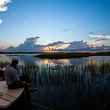





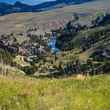



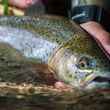
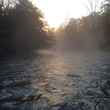




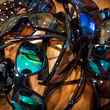



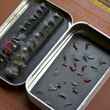



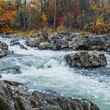

Comments